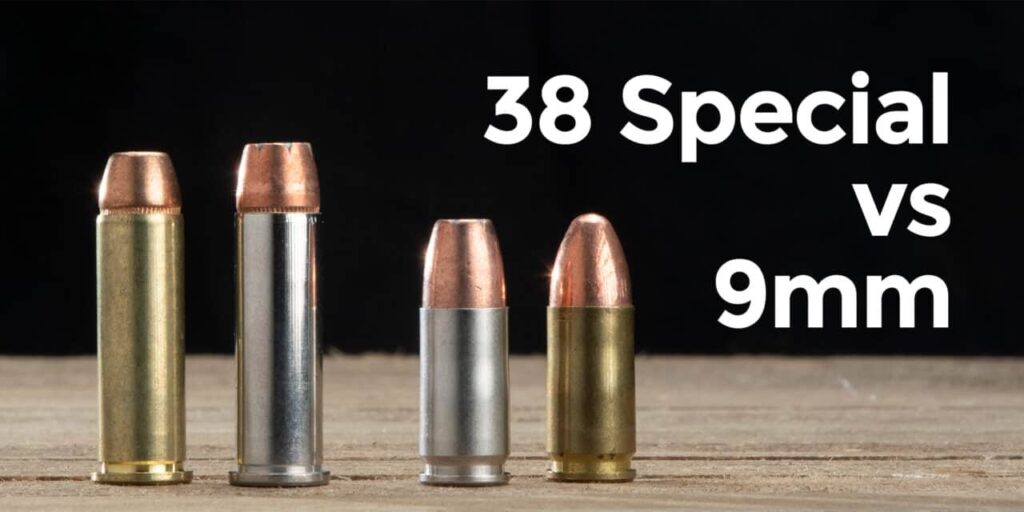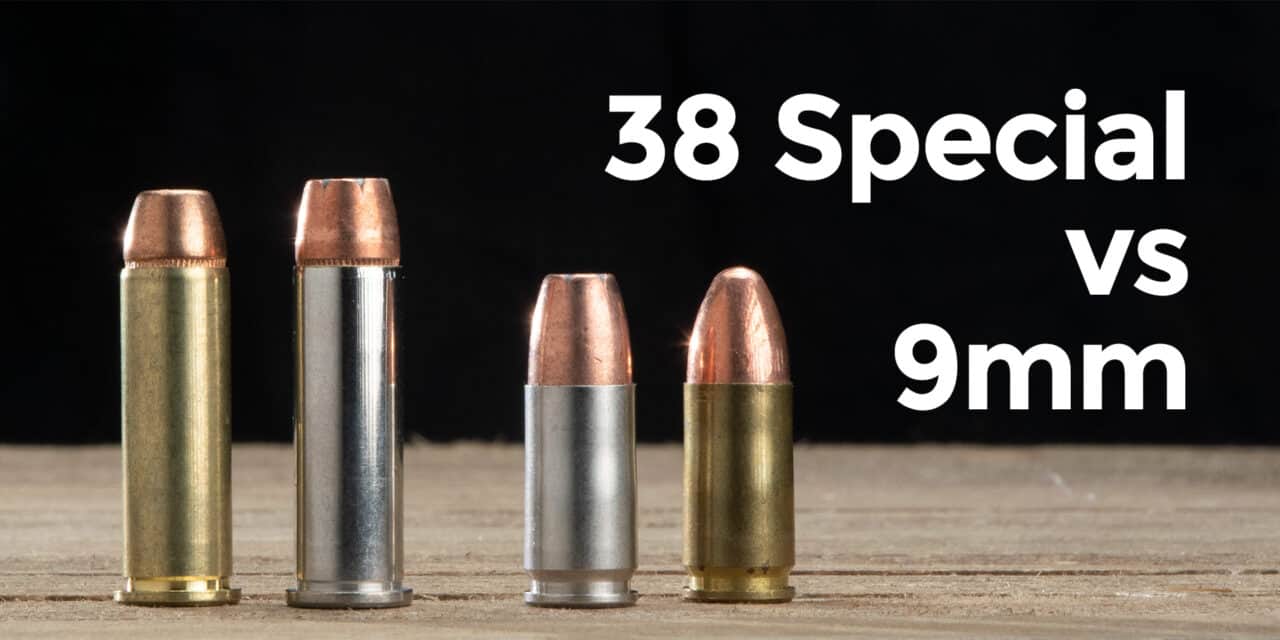
45 ACP vs. 9mm: Choosing the Right Caliber for Self-Defense
The question of whether to choose a .45 ACP or a 9mm for self-defense is one of the most enduring debates in the firearms world. It’s a decision that balances stopping power, capacity, recoil management, and individual proficiency. This article provides an in-depth exploration of both calibers, offering a comprehensive analysis to help you make an informed decision about the best choice for your personal self-defense needs. We’ll delve into the nuances of each cartridge, considering factors beyond simple ballistics charts to provide a practical, real-world perspective.
Understanding the .45 ACP: A Legacy of Stopping Power
The .45 ACP (Automatic Colt Pistol) is a cartridge steeped in history, dating back to the early 20th century. Developed by John Browning, it was designed to provide decisive stopping power in close-quarters combat. Its large diameter and relatively heavy bullet weight have cemented its reputation as a formidable self-defense round. The .45 ACP typically utilizes a 230-grain bullet at a velocity of around 850 feet per second, delivering significant energy upon impact.
However, the .45 ACP isn’t without its drawbacks. Its larger size translates to reduced magazine capacity compared to the 9mm. Pistols chambered in .45 ACP also tend to have more felt recoil, which can impact accuracy and follow-up shot speed, especially for less experienced shooters. Despite these considerations, its proponents argue that the .45 ACP’s inherent stopping power makes it a superior choice for neutralizing threats quickly.
The 9mm Luger: High Capacity and Controllability
The 9mm Luger, also known as the 9x19mm Parabellum, is the most popular handgun cartridge in the world. Its widespread adoption is due to its balance of manageable recoil, high magazine capacity, and effective terminal ballistics when loaded with modern defensive ammunition. A typical 9mm round might use a 115-grain or 124-grain bullet traveling at speeds between 1100 and 1200 feet per second.
The 9mm’s advantages are numerous. Its smaller size allows for higher capacity magazines, meaning you can carry more rounds in your firearm. Its lighter recoil makes it easier to control, leading to faster and more accurate follow-up shots. Modern advancements in bullet technology have also significantly improved the 9mm’s terminal performance, making it a highly effective self-defense round. While it may not have the raw stopping power of the .45 ACP, the 9mm’s controllability and higher capacity offer a compelling advantage in many self-defense scenarios.
Ballistics and Terminal Performance: Comparing the Numbers
Comparing the ballistics of the .45 ACP and 9mm requires a deeper dive than simply looking at energy figures. While the .45 ACP generally delivers more energy on target, the 9mm’s higher velocity and flatter trajectory can offer advantages at longer ranges. However, most self-defense situations occur at very close range (within 7 yards), where these differences become less significant. Terminal performance, which refers to how a bullet behaves upon impact with a target, is arguably more important than raw energy numbers.
Modern defensive ammunition for both calibers utilizes hollow-point designs, engineered to expand upon impact and create a larger wound cavity. When comparing premium hollow-point ammunition from reputable manufacturers, the differences in terminal performance between the .45 ACP and 9mm are often less pronounced than many believe. Both calibers, when loaded with quality defensive rounds, can reliably meet the FBI’s penetration standards and deliver effective wound trauma.
Recoil Management and Training Considerations
Recoil management is a crucial factor in choosing a self-defense handgun. The .45 ACP, with its heavier bullet and lower velocity, generally produces more felt recoil than the 9mm. This increased recoil can make it more challenging to maintain accuracy and fire rapid follow-up shots, especially for shooters with smaller hands or less upper body strength. The 9mm’s lighter recoil makes it easier to control, allowing for faster and more accurate shooting.
Training is paramount, regardless of the caliber you choose. Consistent practice is essential for developing the skills necessary to effectively deploy a handgun in a self-defense situation. Ammunition costs can also be a factor, as .45 ACP ammunition is typically more expensive than 9mm. This cost difference can make it more challenging to afford the necessary practice ammunition to become proficient with the .45 ACP.
Capacity and Firearm Size: Concealability and Practicality
The physical size of the firearm and its magazine capacity are important considerations for concealed carry and everyday practicality. Pistols chambered in .45 ACP tend to be larger and heavier than their 9mm counterparts, which can make them more difficult to conceal comfortably. The .45 ACP’s larger cartridge size also translates to lower magazine capacity. A typical .45 ACP magazine might hold 7-10 rounds, while a 9mm magazine can often hold 15-17 rounds or more.
The higher capacity of 9mm handguns offers a significant advantage in a self-defense scenario. While the need to use every round in your magazine is unlikely, having more ammunition available can provide a crucial edge in a prolonged or complex encounter. The smaller size and lighter weight of 9mm pistols also make them more comfortable and easier to carry concealed for extended periods.
Expert Opinions: Law Enforcement and Military Perspectives
The debate between .45 ACP and 9mm extends beyond the civilian market and into the realms of law enforcement and the military. For many years, the .45 ACP was a popular choice among law enforcement agencies, prized for its perceived stopping power. However, in recent decades, the 9mm has become the dominant cartridge in law enforcement, largely due to its higher capacity, manageable recoil, and advancements in ammunition technology.
The U.S. military also adopted the 9mm as its standard sidearm cartridge in the 1980s, replacing the .45 ACP. This decision was driven by NATO standardization, as well as the 9mm’s advantages in capacity, recoil, and ammunition availability. While some special operations units still utilize the .45 ACP, the 9mm remains the primary handgun cartridge for the vast majority of military personnel.
Real-World Scenarios: Analyzing Self-Defense Encounters
Analyzing real-world self-defense encounters can provide valuable insights into the effectiveness of different calibers. While it’s impossible to draw definitive conclusions from anecdotal evidence, examining case studies can help to illustrate the importance of shot placement, training, and situational awareness. In many documented self-defense shootings, both .45 ACP and 9mm handguns have proven to be effective in stopping threats.
Ultimately, the effectiveness of any handgun in a self-defense situation depends on the shooter’s ability to accurately place shots on target. A well-placed 9mm round is far more effective than a poorly aimed .45 ACP round. Training, practice, and a clear understanding of your firearm’s capabilities are essential for maximizing your chances of survival in a violent encounter.
Choosing the Right Firearm: Ergonomics and Personal Fit
Beyond the caliber debate, selecting the right firearm involves considering ergonomics and personal fit. A handgun that feels comfortable in your hand and is easy to operate is more likely to be used effectively in a stressful situation. Factors such as grip size, trigger reach, and slide manipulation all play a role in determining a firearm’s suitability for a particular individual.
It’s crucial to handle and, if possible, shoot different handguns before making a purchase. Renting firearms at a local range can allow you to experience the recoil and handling characteristics of various models chambered in both .45 ACP and 9mm. Choosing a firearm that fits your hand and shooting style is just as important as selecting the right caliber.
Ammunition Selection: Optimizing for Self-Defense Performance
Ammunition selection is critical for maximizing the effectiveness of either .45 ACP or 9mm for self-defense. Standard full metal jacket (FMJ) ammunition is not recommended for self-defense, as it is designed for target practice and training, not for stopping threats. Hollow-point ammunition, designed to expand upon impact, is the preferred choice for self-defense applications.
Premium hollow-point ammunition from reputable manufacturers is engineered to meet specific performance standards, ensuring reliable expansion and adequate penetration. Researching and selecting the right ammunition for your chosen caliber is essential for optimizing its terminal performance. Consider factors such as bullet weight, velocity, and expansion characteristics when making your ammunition selection.
The Importance of Consistent Practice and Training
Regardless of whether you choose a .45 ACP or a 9mm for self-defense, consistent practice and training are paramount. Owning a firearm is only the first step; developing the skills necessary to use it effectively in a high-stress situation requires dedicated training and practice. Regular range sessions, professional instruction, and scenario-based training can all help to improve your proficiency and confidence.
Focus on mastering the fundamentals of marksmanship, including grip, stance, sight alignment, and trigger control. Practice drawing from concealment, reloading under pressure, and clearing malfunctions. The more proficient you become with your firearm, the better prepared you will be to defend yourself and your loved ones.
The .45 ACP and 9mm: A Comparative Overview
- .45 ACP: Known for its substantial stopping power and larger bullet diameter. Often associated with more recoil and lower magazine capacity.
- 9mm: Highly popular due to its manageable recoil, higher magazine capacity, and advancements in ammunition technology. Offers a balance of performance and controllability.
Making the Right Choice: Factors to Consider
Choosing between a .45 ACP and a 9mm for self-defense is a personal decision that depends on individual preferences, physical capabilities, and training levels. Consider the following factors when making your choice:
- Recoil Sensitivity: If you are recoil-sensitive, the 9mm is likely a better choice.
- Hand Size and Strength: Smaller hands may find it easier to grip and control a 9mm handgun.
- Concealed Carry Needs: 9mm pistols are generally easier to conceal due to their smaller size.
- Training Budget: 9mm ammunition is typically less expensive, allowing for more frequent practice.
- Personal Preference: Ultimately, the best choice is the one you feel most comfortable and confident with.
Prioritizing Personal Safety: It’s More Than Just Caliber
The decision between a .45 ACP and a 9mm is just one piece of the self-defense puzzle. Situational awareness, threat avoidance, and de-escalation techniques are all crucial components of a comprehensive personal safety plan. No firearm, regardless of caliber, can guarantee your safety. Developing a proactive mindset and practicing responsible gun ownership are essential for protecting yourself and your loved ones.
Ultimately, Proficiency Matters Most
The debate between the .45 ACP and the 9mm for self-defense is nuanced, with valid arguments on both sides. While the .45 ACP offers a legacy of stopping power, the 9mm provides higher capacity and easier handling, especially when loaded with modern defensive ammunition. Ultimately, the best choice depends on your individual needs, preferences, and training. Prioritize proficiency and responsible gun ownership, and choose the caliber that you can shoot accurately and confidently under pressure. Consider your own experience; many find that consistent practice with a 9mm leads to better shot placement and faster follow-up shots than infrequent practice with a .45 ACP. The key is to find the firearm that allows you to perform at your best when it matters most.

